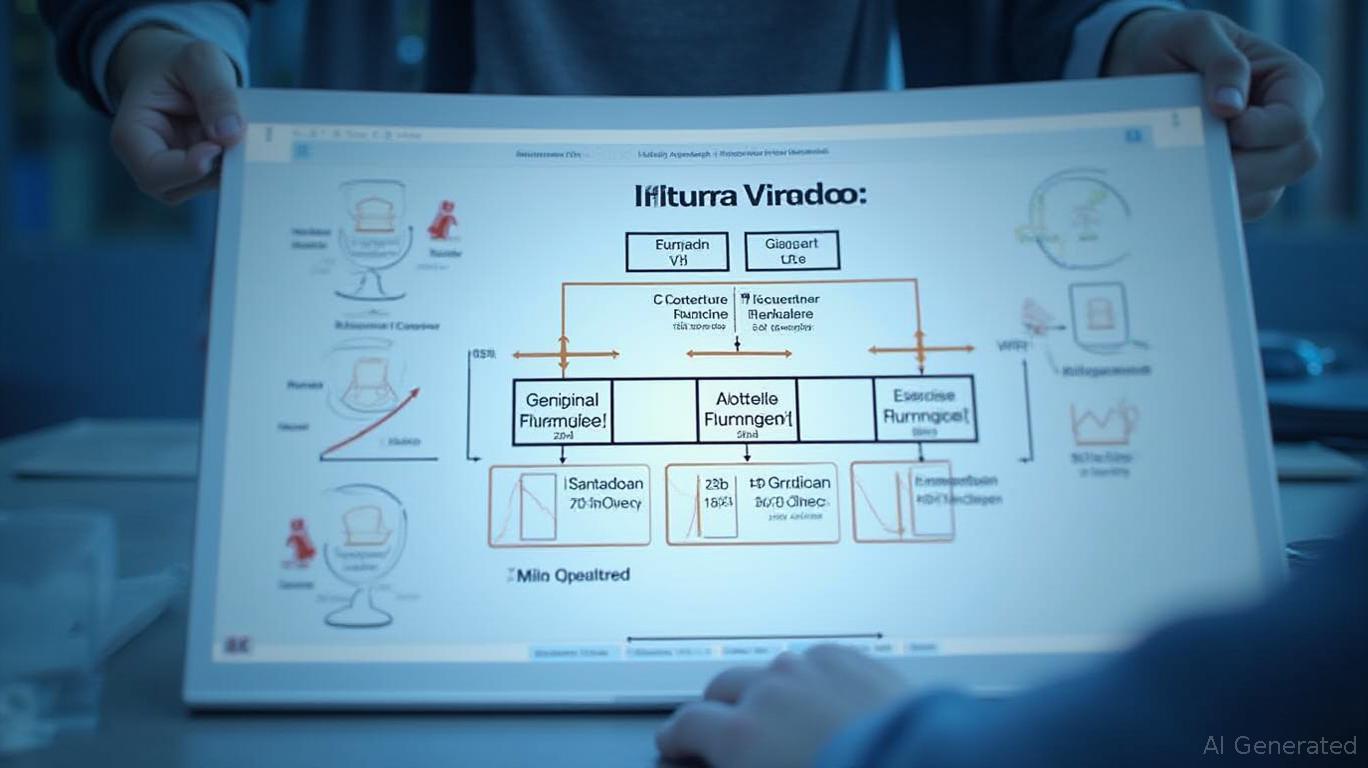Xilio Therapeutics' $50M Public Offering: A Warrant-Driven Play for Capital Flexibility and Reduced Shareholder Dilution
Xilio Therapeutics' recent $50 million public offering, structured through a complex but strategic use of warrants, has positioned the biotech firm to secure incremental capital while mitigating immediate shareholder dilution. By leveraging a multi-tiered warrant system, the company aims to fund its immuno-oncology pipeline while retaining flexibility to raise up to $150 million by 2026, contingent on warrant exercises. This structure offers investors a rare blend of near-term capital certainty and long-term funding potential, though it hinges on Xilio's ability to meet performance milestones.
The Warrant Architecture: A Blueprint for Staged Capital
The offering's core innovation lies in its four-part warrant design, each tailored to different timelines and conditions. Investors purchased units composed of:
- Pre-Funded Warrants: Exercisable immediately at a nominal $0.0001 per share, expiring only when fully exercised.
- Series A Warrants: Exercisable at $0.75 per share by December 1, 2025, or earlier if Xilio's stock hits $1.50 for five consecutive days.
- Series B Warrants: Exercisable starting November 1, 2025, with an expiration in December 2025, extendable under certain conditions.
- Series C Warrants: Exercisable from June 2026, with expiration by December 2026, tied to the exercise of Series B warrants.

The immediate $50 million infusion from the offering's initial sale provides Xilio with runway to advance its lead product candidates, including its tumor-activated immuno-oncology therapies. Crucially, the potential $100 million in additional proceeds from Series B and C warrant exercises—assuming all are exercised in cash—creates a “capital bridge” to 2026. This structure ensures Xilio can access more funding only if its stock price or performance justifies it, reducing dilution risk upfront.
Strategic Flexibility: Timing, Triggers, and Incentives
The warrant design strategically aligns capital raises with Xilio's growth trajectory. For instance:
- Series A's $1.50 stock price trigger creates an incentive for investors to push for higher valuations. If achieved before December 2025, it extends Series A's lifespan, potentially allowing Xilio to secure capital at a stronger price point.
- Series B and C's staggered timelines ensure that later-stage funding is tied to sustained progress. Series B's 2025 expiration and Series C's 2026 exercisability require the company to demonstrate ongoing viability, reducing the risk of overleveraging in a volatile market.
This phased approach contrasts with traditional equity raises, which often demand immediate share issuance. By delaying full capital realization until warrants are exercised, Xilio avoids flooding the market with shares upfront, preserving its stock price and minimizing near-term dilution.
The stock's performance relative to the $1.50 trigger price will determine Series A's exercisability and its impact on capital availability.
Risks and Considerations for Investors
While the structure offers strategic advantages, it carries notable risks:
1. Execution Dependency: The $150 million maximum is contingent on warrant exercises, which require sustained stock price growth or investor confidence. If Xilio's therapies underperform, or if the stock languishes below exercise thresholds, the company may miss out on additional capital.
2. Dilution Timing: Full warrant exercise could significantly increase shares outstanding. For instance, if all warrants are exercised, the company would issue over 200 million shares, potentially diluting existing shareholders by over 50% (depending on current float).
3. Regulatory and Market Volatility: The offering's closing on June 5, 2025, assumes favorable market conditions, but biotech valuations are sensitive to clinical trial results and regulatory setbacks.
Investment Implications: A High-Reward, High-Risk Gamble
For investors, Xilio's warrant structure presents a compelling but nuanced opportunity:
- Bull Case: If Xilio's therapies demonstrate breakthrough efficacy in upcoming trials and its stock surpasses $1.50, the company could unlock the full $150 million while maintaining a stronger per-share value. Warrant holders would profit from both capital gains and the ability to exercise at $0.75.
- Bear Case: A stagnant or declining stock price would limit additional capital access, leaving Xilio reliant on the initial $50 million. Investors might see diluted ownership without the promised upside.
The company's ability to advance its pipeline without further dilution hinges on these timelines.
Final Analysis: A Structured Gamble Worth Watching
Xilio's warrant-driven offering is a masterclass in capital efficiency for a biotech navigating uncertain markets. The structure reduces immediate dilution while reserving upside for investors who believe in the company's science. However, success depends on executing clinical trials, managing stock volatility, and meeting the intricate terms of its warrant ladder.
Investment Advice:
- Aggressive Investors: Consider a position if you have high conviction in Xilio's pipeline. The warrants' low exercise prices and staggered terms create a leveraged upside if the company hits milestones.
- Conservative Investors: Wait for clarity on clinical data and stock performance post-offering. The $50 million provides a near-term buffer, but the full capital story hinges on execution.
In sum, Xilio's offering exemplifies the creative financing tools emerging in biotech—a high-risk, high-reward model that could redefine how companies balance growth and shareholder value.
As of June 5, 2025.

Comments
No comments yet